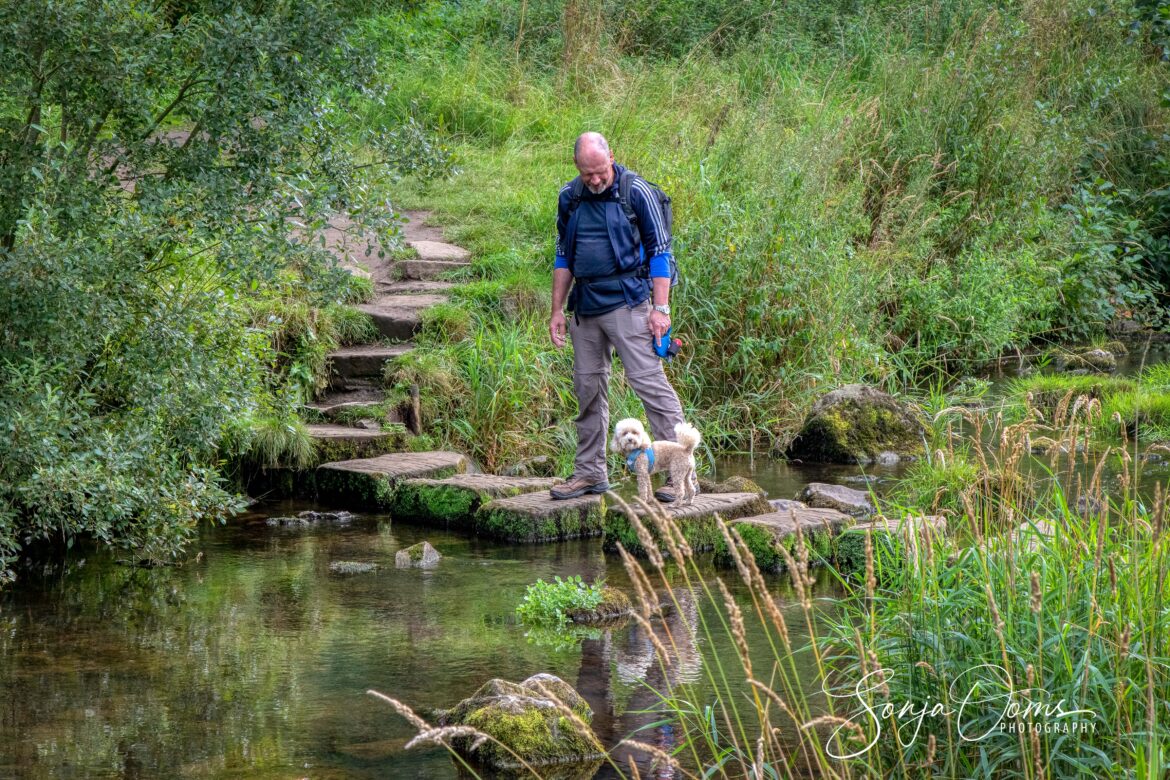Northumberland: castles, Hadrian’s wall, endless vistas, winding roads, and lots and lots of sheep!
Sooner than expected we made it up North for a 7 day discovery trip to Northumberland. In fact we agreed that we would not travel farther up North into Scotland as long as we are stationed in London. Scotland is on our to-do list once we’ll be retired so we can take a ferry from the continent and not have to drive 10-something hours to Kilt-country.
We want to use our time living in Wimbledon to discover nearer Wales & England.
That being said, this UK summer was pretty much washed out this year and the UK does have some pretty unpredictable and interesting weather, it can honestly feel like four seasons in one day at times. But time and again we totally lucked out with the weather on every single one of our mini-trips this year. And on this trip it was no different: got some gorgeous sunshine when we were admiring Hadrian’s wall and the rest of the time overcast but mostly dry.
And again so much to see and so little time – as usual work interferes with fun 🙂
Off to Northumberland on the A1 then. And I must say Northumberland is well served by road links around the county, most of them good quality (I guarantee you – this is not the case everywhere in England J) as we noticed that lots of roads just received or were receiving a new top layer of shiny black asphalt; only the most remote areas will require a significant degree of walking from the nearest road.
Bordering the Scottish Borders to the north, Northumberland is England’s northernmost county and known as its border county.
Within the county boundary lies the Northumberland National Park Authority (NNPA) and the Northumberland Coast Area of Outstanding Natural Beauty. The NNPA covers an area of approximately 1,030 square kilometers (103.000 Hectares !) and can roughly be divided into three zones: Hadrian’s Wall country, Redesdale including River North Tyne and Kielder, and the Cheviot Hills. The Kielder water and Forest Park alone covers 250 sq miles (65.000 Hectares)
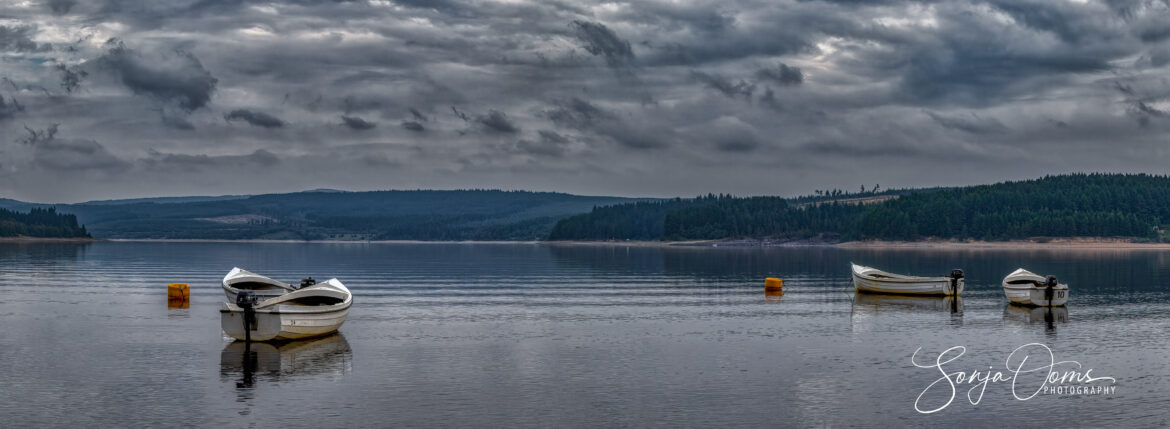
Kielder Lake
Home to England’s largest forest and the biggest man-made lake in Northern Europe, Kielder Water & Forest Park is a playground for outdoor enthusiasts, a haven for wildlife and some of the best dark skies in England.
You can hike for hours up there without meeting anyone. But beware: big areas remain with patchy or even non-existent mobile phone coverage. If going into the forests alone is your thing, for safety reasons it’s therefore worth letting a relative or friend know what your plans are for the day before setting off for these areas.
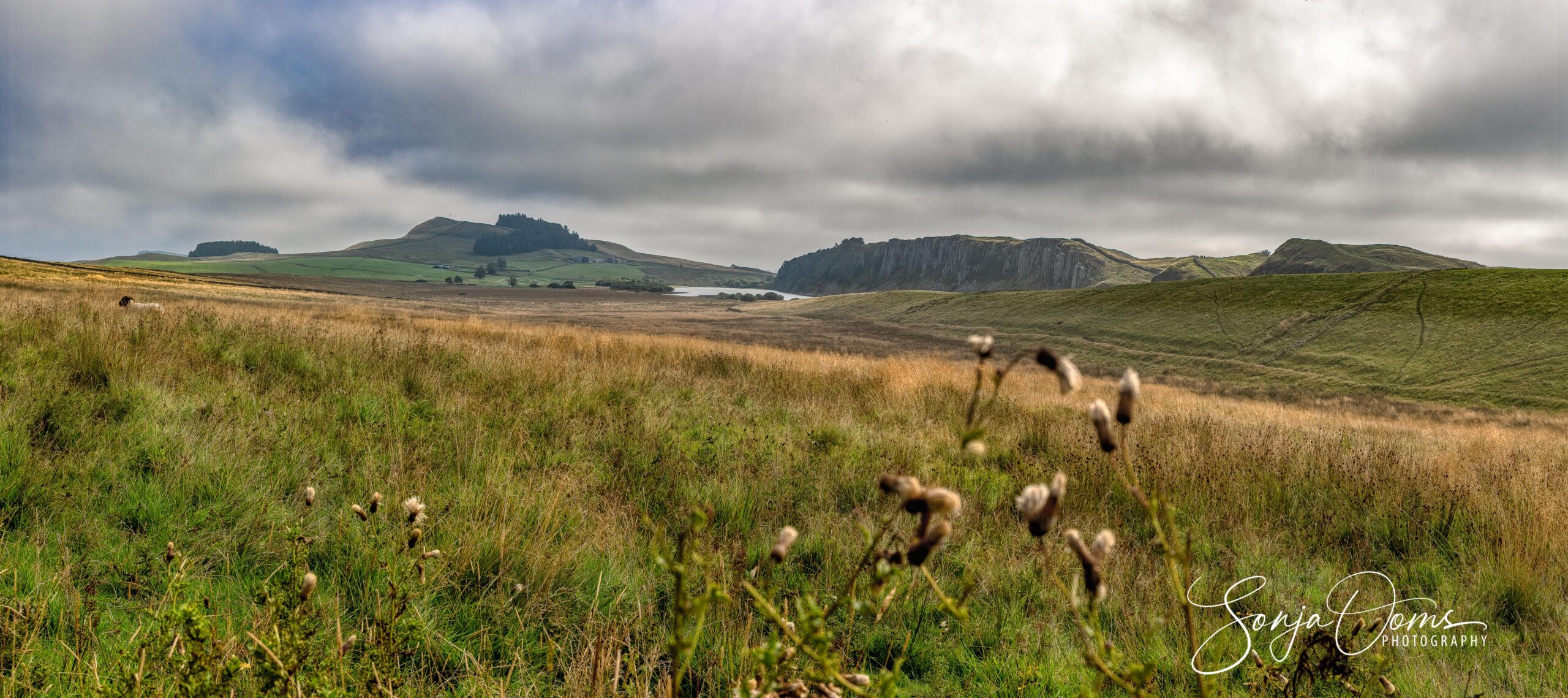
Stretching 73 miles from coast to coast, Hadrian’s Wall was built to guard the edge of the Empire, the wild north-west frontier (there was about 400 years of Roman rule in Britain)
On a walk along the remains of the wall you can see the rise and fall of the landscape along which Hadrian’s Wall was built.
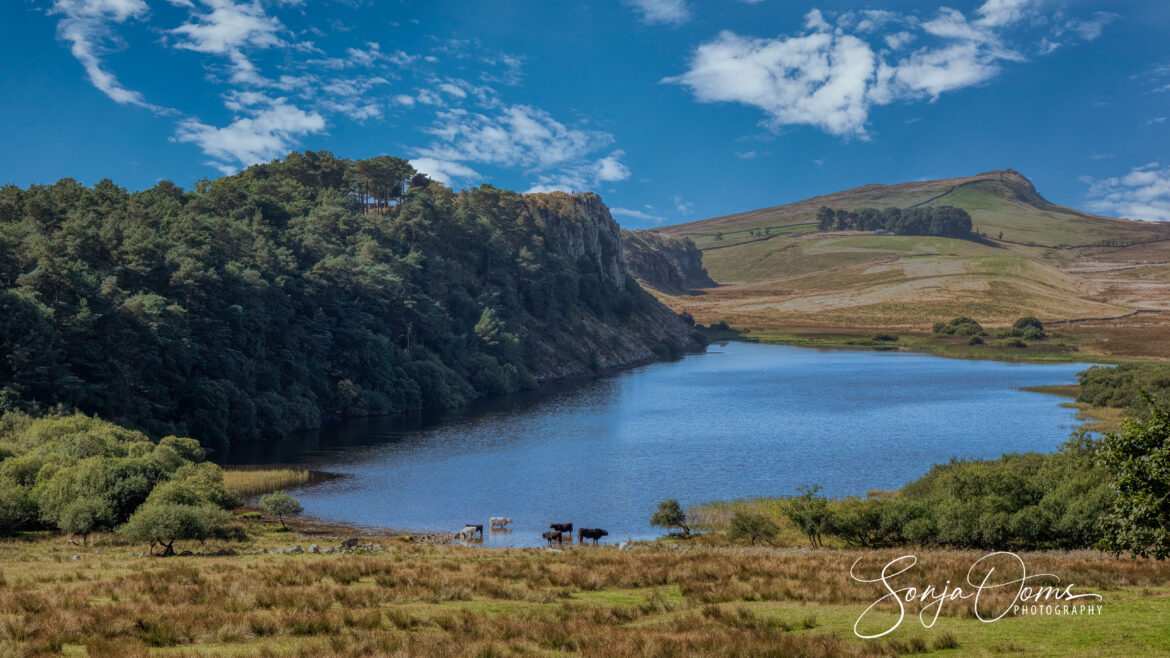
There’s not much left of it now, but Hadrian’s Wall must have been a pretty impressive sight. A complex system of communications and defenses. As well as the Wall itself there was an earthwork, a ditch and two major roads along the 73-mile frontier.
The original wall was 4.5 m high, included 3 bridges, 16 forts, 80 mile-castles and 160 turrets. 100 m of wall took about 3 years to finish and about 2300 tons of stone!
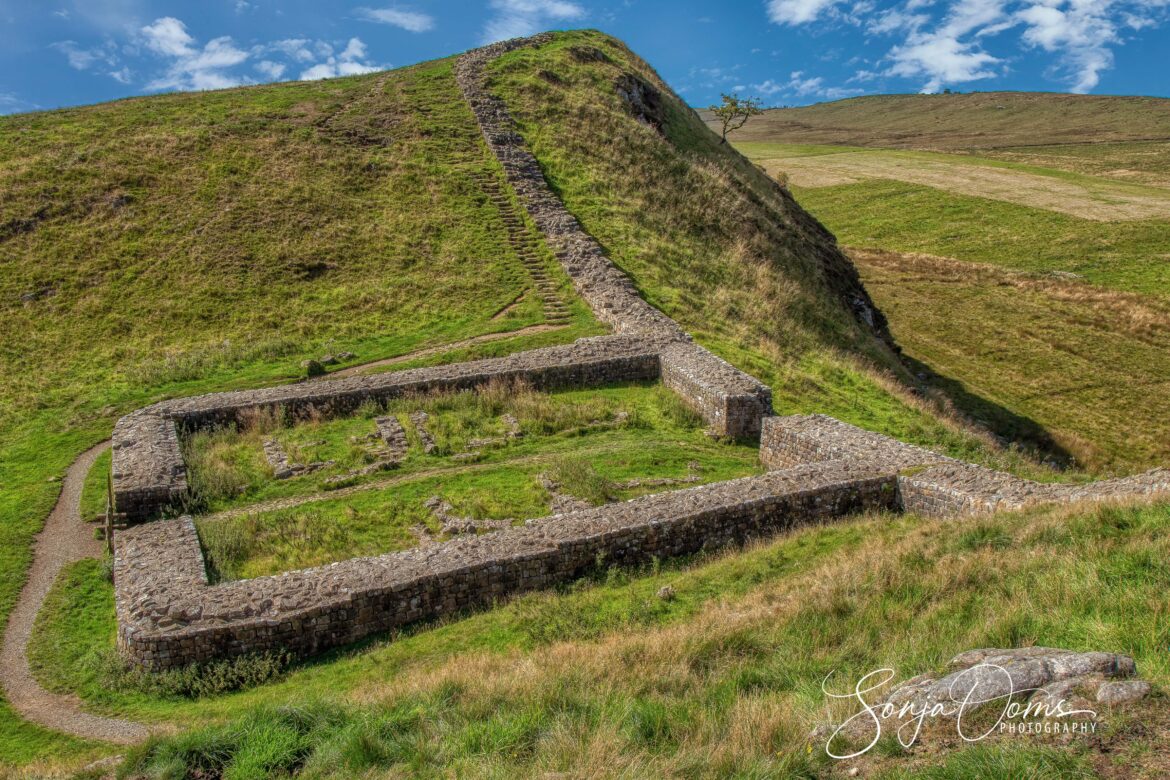
Mile-castle 39 is one of the eighty mile-castles that were built every Roman mile along the length of Hadrian’s Wall. There are now just a handful still standing and Mile-castle 39 – thanks to its location – is one of the finest of those few.
The mile-castle is at the bottom of a glacial nick – a cut through the Whin Sill rock carved by glaciers during the last ice age. An alternative name for the area is Castle Nick for this reason.
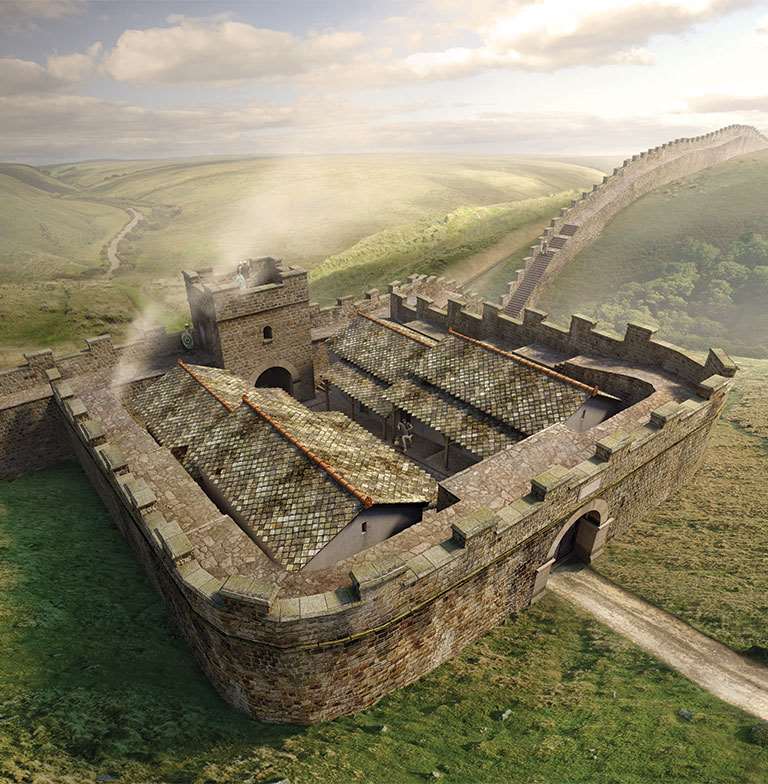
Image: An artist’s reconstruction of one of the mile-castles on Hadrian’s Wall © Historic England
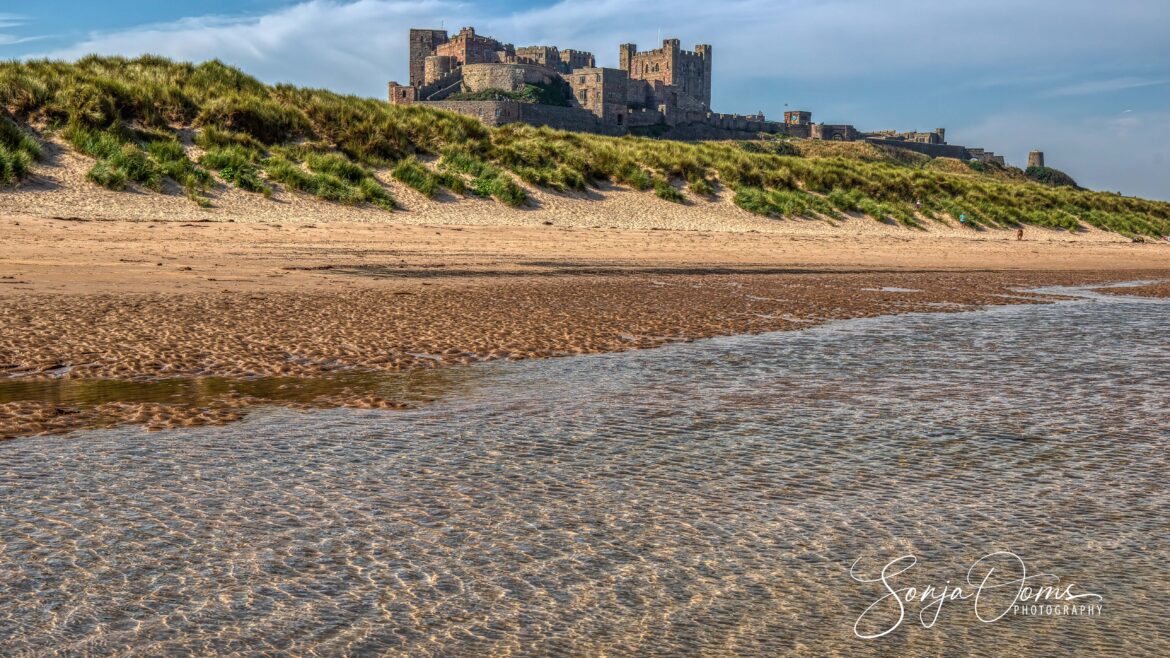
Bamburgh Castle sits on an outcrop of the Whin Sill, a rock formation that runs across the county of Northumberland. Once the home of the Victorian industrialist Lord Armstrong, the castle is a popular tourist attraction and photographic subject.
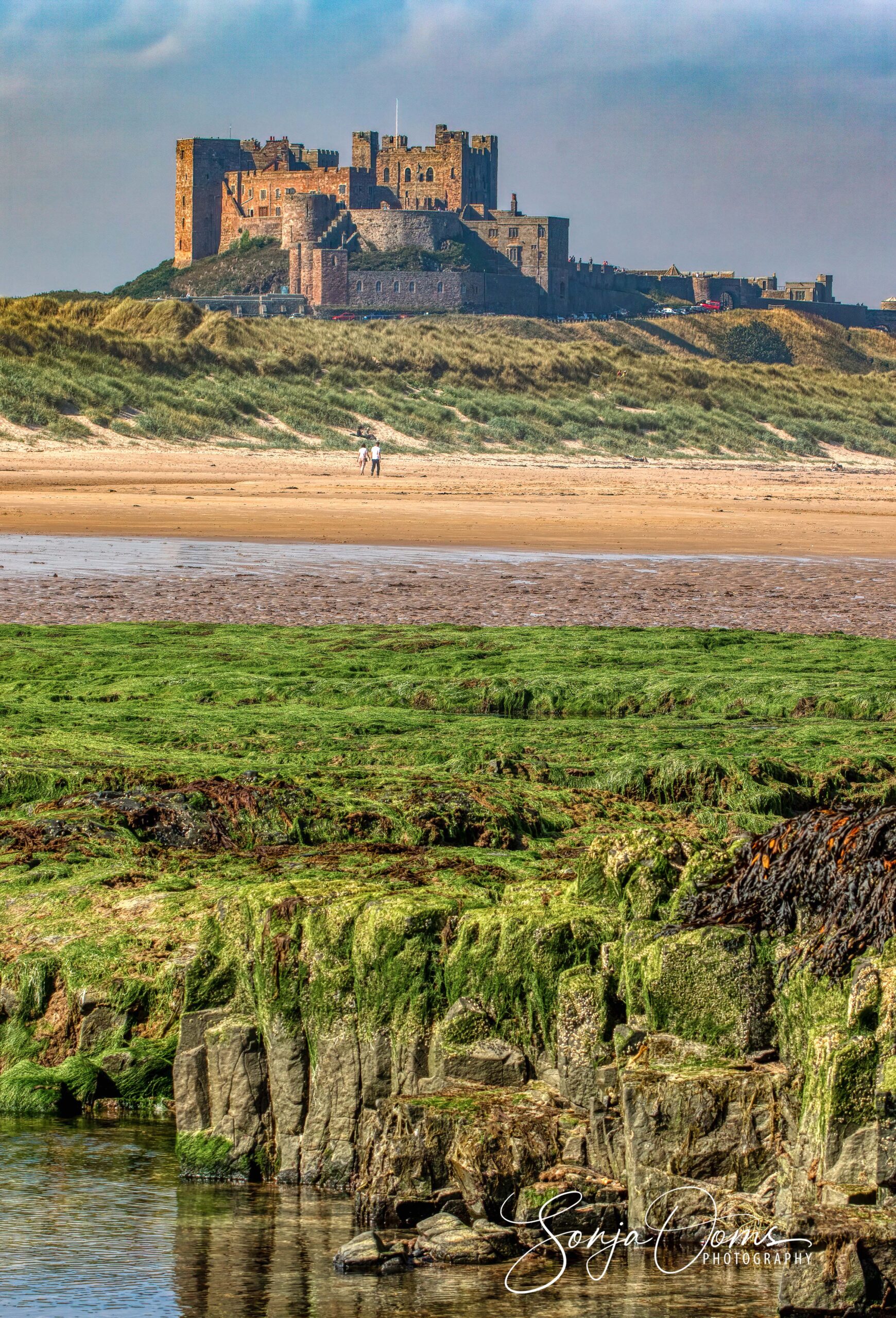
Bamburgh Castle has stood guard above the spectacular Northumberland coastline for over 1,400 years. It is also believed to be the site of Sir Lancelot’s fictitious castle, Joyous Garde.
Almost completely reduced to ruin and financial difficulties, the castle was put up for sale and was bought by William Armstrong for £60,000 in 1894. The same Armstrong from the fantastic Cragside (see later in the blog) He and his family spent millions of pounds restoring the castle and it still is the private home of the family.
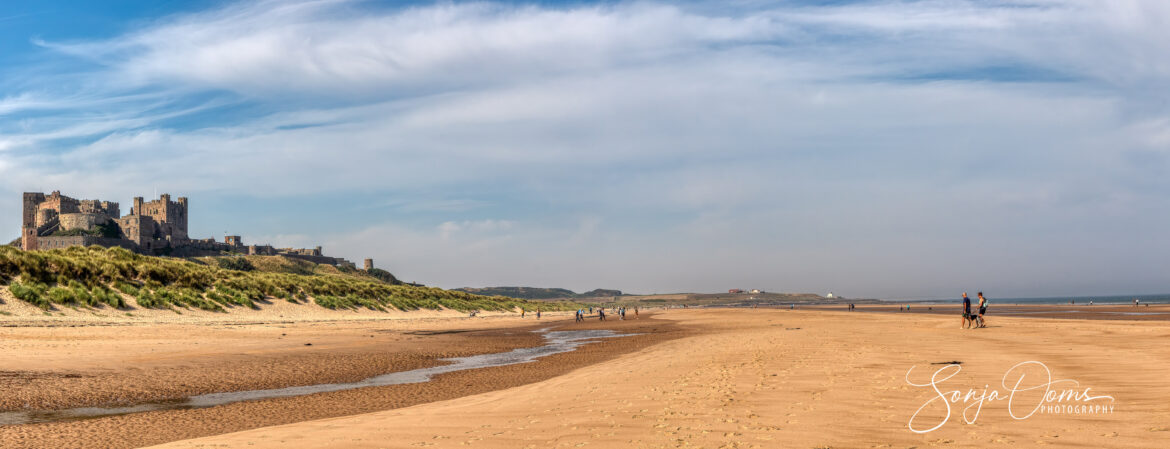
But even when schools are open and most of the annoying kids are safely locked inside a classroom, Bamburgh Castle and the nearby village is still a very popular tourist destination and was pretty crowded when we arrived. So we did not go inside, but chose to take a leisurely stroll with Evi the Dog (dogs can run freely) on St. Aiden Beach and have a look at the impressive castle from the beach while enjoying the unbelievable vista of the many miles of sandy beach and dunes and more – extremely happy – dogs than people 🙂
Also worth a full day hike are Simonside and Dove Crag.
Dove Crag is a rock outcrop. It is part of a chain of crags (a steep or rugged cliff or rock face) that run across the Simonside Hills forming the fells’ distinctive outline.
The Crag was formed 15,000 years ago when ice 1 km thick scoured the land removing the softer rocks to the north and south. The rocks are exposed to the prevailing winds from the west that blow almost unhindered across this part of Northumberland. Natural erosion has sculpted the rocks into some of the most appealing shapes and forms. And what a fantastic reward to look around and admire the scenery and Northumberland landscape when you make it to the top.
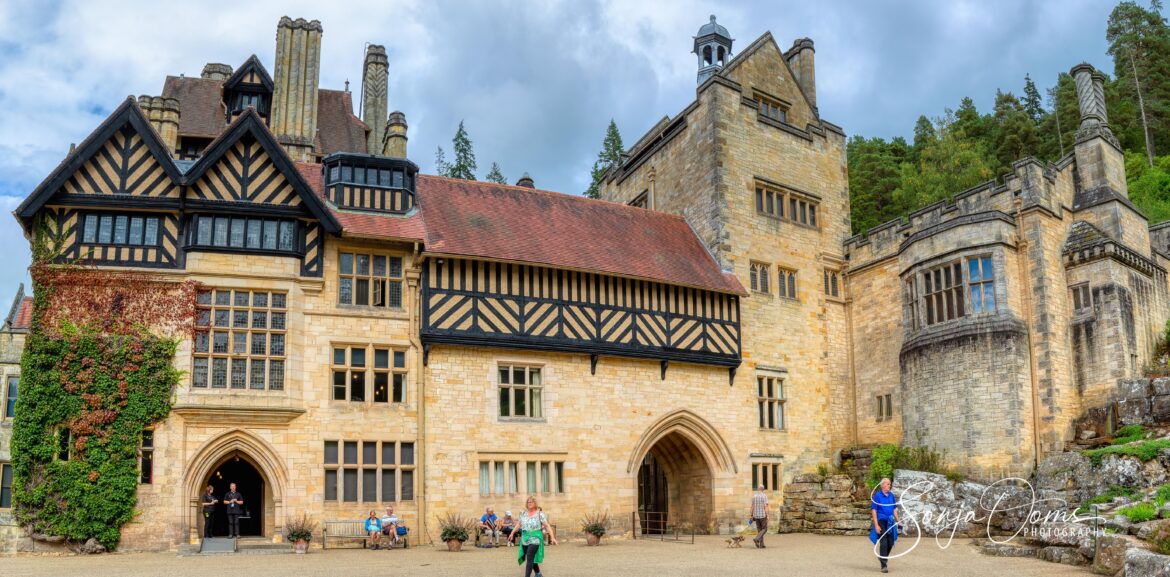
And when in Northumberland, most certainly not to miss: illuminated with hydro-electricity and powered by hydraulics, another National Trust jewel: Cragside. Just stunning, I have never seen so many rhododendrons in my life (note to self: come back here in spring when they will be flowering)
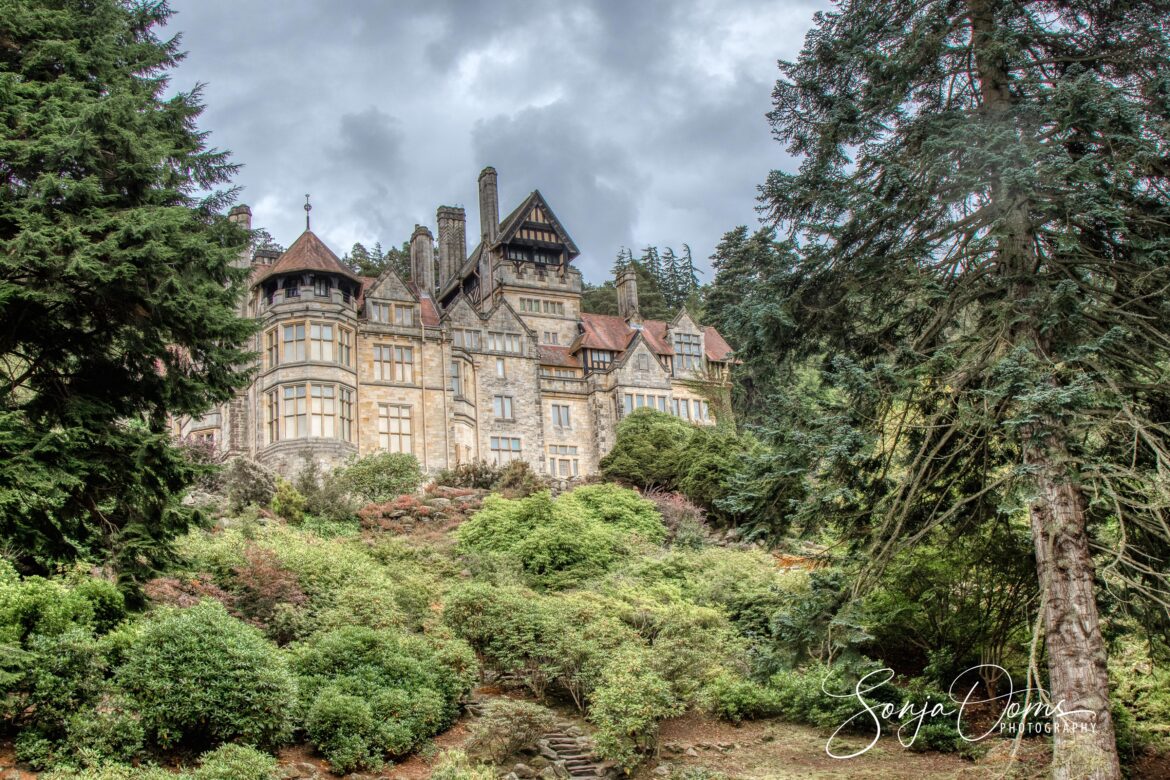
Cragside was created by two remarkable individuals, Lord William and Lady Margaret Armstrong (see also Bamburgh Castle)
We spent one day roaming the estate but that is not nearly enough. We didn’t even make it inside the house. A 1,000 acres (400 Ha) of formal gardens, a pinetum, impressive rock garden, an iron bridge, beautiful lakeside walks, waterfalls and streams … it has it all.
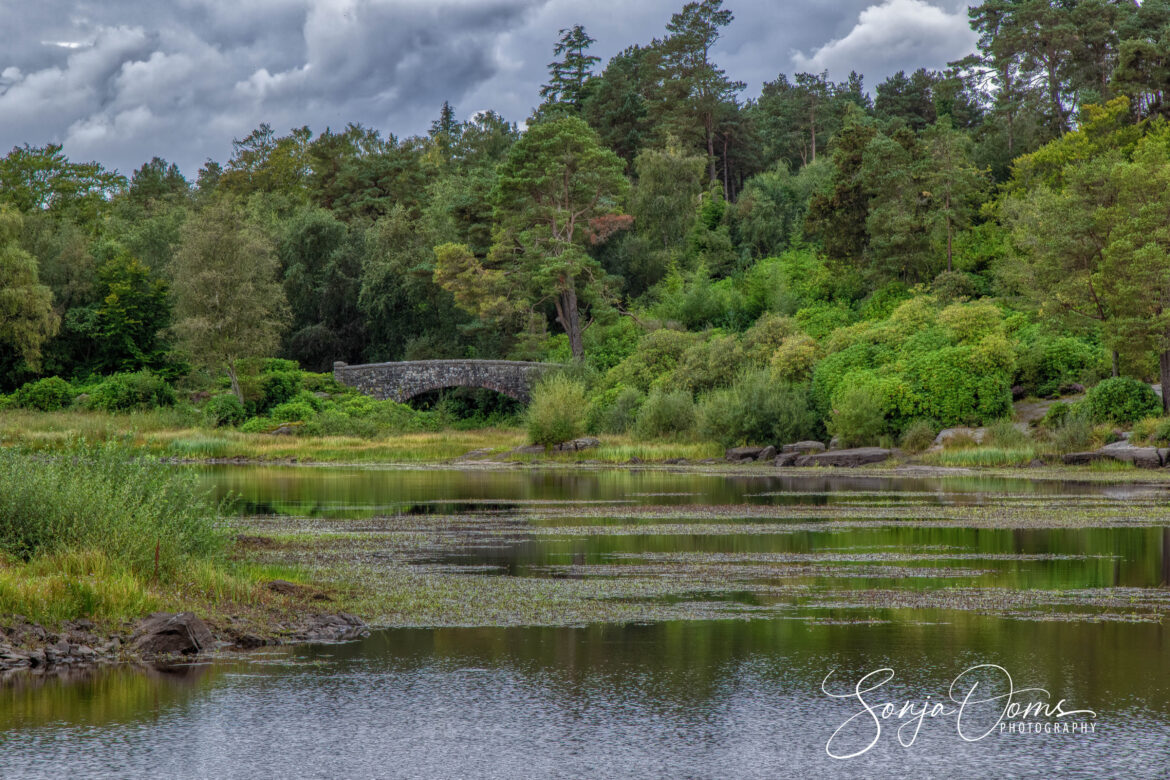
The best way to discover as much as possible in one day, is the Carriage Drive. Armstrong wanted to be able to drive around the estate in a carriage so he built a 6-mile circular route to the very top of the estate. There are lots of places to stop for photos and more discovery on foot to do.
Oh and what about the sheep? Well they’re everywhere and are usually quite smelly and pretty boring animals. Not at all “Shaun the sheep” material 🙂 Not boring at all to look at on the other hand are the sheepdog herding the sheep. They’re beautiful animals and unbelievably intelligent dogs who love their job. They jump on the backs of the sheep, walk over sheep, but they also excel in jumping over very high gates and on and off the shepherd’s quad. So much fun to watch them working when they’re herding the sheep. The world’s most expensive sheepdog was sold for more than £27,000 beating the previous record set by a border collie which sold for £20,000. The two above only cost £350 and just bark at the sheep from the back of the quad ![]()
![]()
